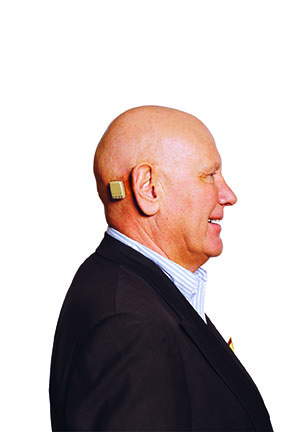
In a person with normal hearing, sound enters the external ear and travels down the ear canal through the middle ear to the cochlea, or inner ear. This process is called air conduction. For individuals with certain types of hearing loss, sound is unable to travel down these pathways. The BAHA system takes advantage of the bones’ natural conductive abilities by sending sound vibrations directly to your inner ear, bypassing the auditory canal and middle ear completely.
The BAHA device is made up of three components: a titanium implant, an external abutment and a sound processor. Once the surgical implant is in place, it gradually fuses with the skull bone over a period of several months in a process known as osseointegration. The BAHA unit is then ready to be fit and programmed. The sound processor transmits vibrations through the external abutment to the implant, where vibrations in the skull and inner ear stimulate the nerve fibers responsible for hearing.
BAHA is a safe and effective FDA-approved treatment alternative that enables many hearing-impaired individuals to communicate more effectively. It has been available in the U.S. since 1977.
Candidates for BAHA are typically patients with conductive and mixed hearing losses, or those with unilateral (single-sided) hearing loss.
If you experience chronic ear infections that do not respond to treatment, you may find the BAHA system particularly beneficial. Conventional hearing aids can aggravate the condition due to humidity and moisture building up in the ear canals. Those with congenital ear defects (such as ear canals that are narrow or absent) are good candidates, as well.
Call PDX ENT at (503) 222-3638 for more information or to schedule an appointment.


